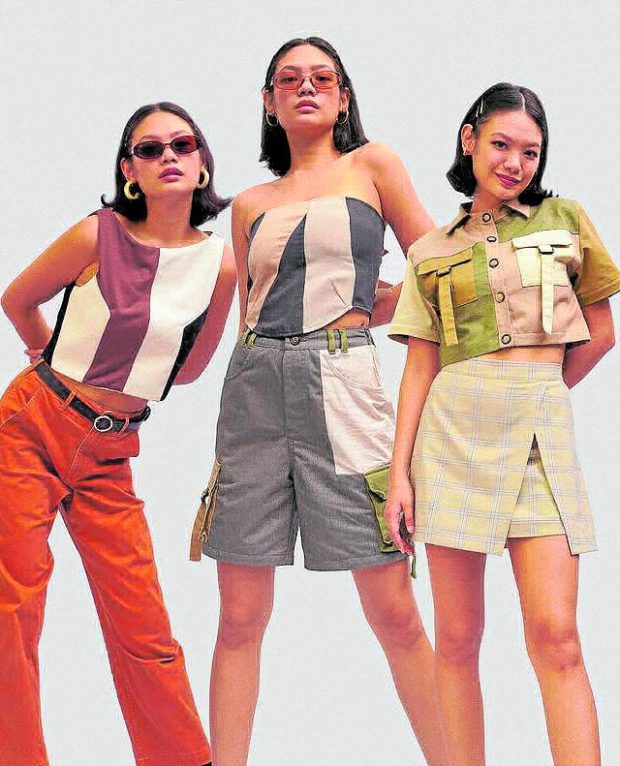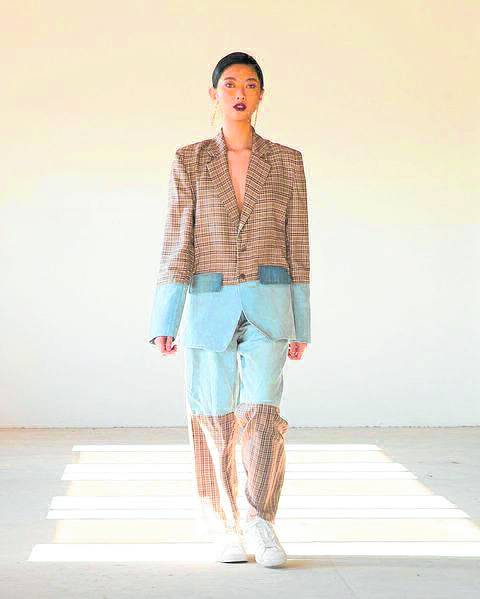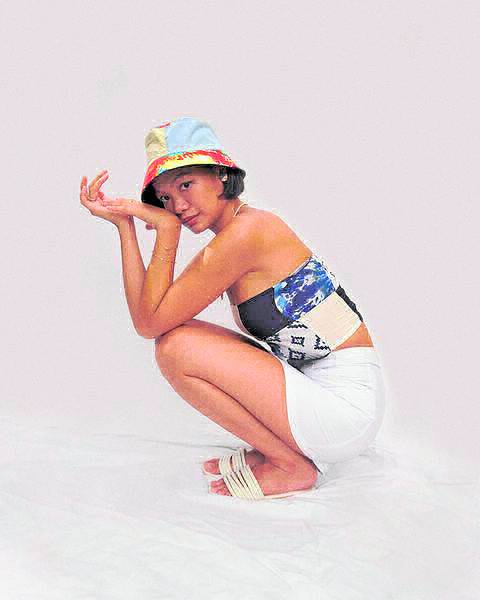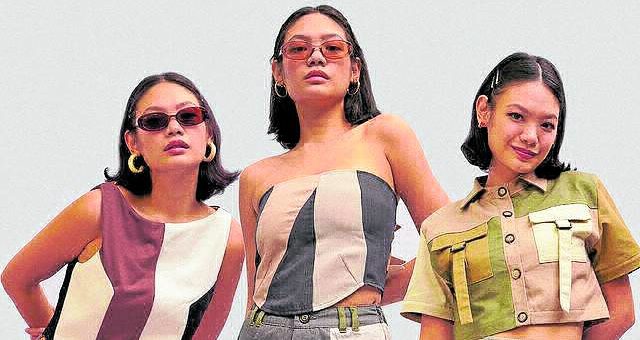
Ferrer says they are focusing on reworking denim, as the water-guzzling material is one of the most discarded textiles.
Where do old school uniforms go after four years of high school? Perhaps to a younger sibling who attends the same school. Or, at the back of the closet, only to be used during that one party where the dress code is “your old school uniform.” Oftentimes, those unused pieces end up in landfills after graduation.
That may not be the case for Alyanna Ferrer, a 26-year-old designer who breathes new life into dead-stock fabrics, vintage denim and even old school skirts.
Under her eponymous brand (@alyannaferrer on Instagram; alyannaferrer.com), Ferrer has fashioned chic and stylish pieces such as a snappy matching coat and pants set out of a checkered brown school skirt and various denim jeans; a little black dress that’s reminiscent of Kim Kardashian’s Met Gala look using a knit sweater and dead-stock jersey fabric; and an office blazer that can go from day to night.
“Through the years, I have witnessed the underlying issues (unethical working conditions and compensation, exploitation of natural resources, fashion waste, etc.) brought by fast fashion and its negative effects on our society and environment,” the Fashion Design and Merchandising graduate told Lifestyle in an interview.
“In 2020, when the lockdown was first imposed, I began questioning the role of fashion in changing this destructive system. This realization led me to redefine my perspectives and actions as a designer and to utilize my brand as a vehicle for change.”

These tops were made using “retaso,” or excess cuttings and end-of-fabric rolls. —PHOTO COURTESY OF NIN AND YANG
Ferrer did her research and design development and collected old garments from relatives at the beginning of the lockdown. On Valentine’s Day last year, she launched Alyanna Ferrer with Reissue Vol. 1—a capsule collection “made from nothing new.”
“When I first started deconstructing and upcycling, I would collect various garments (formal trousers, denim jeans, cargo pants, etc.) with textiles that could work well together by studying their weight, color and condition. I also like to explore working with materials that are not traditionally made for clothing but carry wearable and functional characteristics,” she said.
Circular living
Currently, Ferrer sources her materials from Humble Sustainability, a circular living community that helps people declutter by collecting discarded items that can be repurposed.
“Today, our team is working on giving focus to upcycling denim, as it is one of the most discarded textiles. I also think that it supports the relevance of my designs since most Filipinos connect with denim, as it has been a staple in our wardrobe because of its versatility, durability and functionality.”
Upcycling is all the rage these days, with fashion brands finding ways to create new clothes out of old fabrics. Several young designers have also been focused on using old fabrics and retaso or scraps to prevent waste, like sisters Thea and Nina Morales.
Neither of them had a formal background in fashion prior to their venture (Thea studied business economics while Nina took up industrial design), but the sisters have a knack for breathing new life into used goods.

“Growing up, we’ve always had an affinity for repurposing materials. For example, we’ve always produced handmade gifts for loved ones using scrap trinkets, or we love transforming our dad’s oversized clothes into something trendy we can use,” Thea, 26, said in an interview.
The siblings eventually turned their passion into a venture that allowed them creative freedom while also being mindful of the environment.
“Upcycling became the clear choice for us,” Nina said. “We’ve seen first-hand the heaps of excess textiles that are left unused during production, since we have relatives who work in the industry. With the abundance of discarded fabric just lying around, we wanted to breathe new life into what others may deem as waste and promote a circular economy.”
Since the launch of Nin and Yang (@ninandyang on Instagram, ninandyang.com) in March last year, they turned retaso into stylish patchwork pieces and accessories.
“You’ll notice that all our designs are adjustable via straps/ties. Most designs are also multifunctional, and versatile. For instance, we have pants that turn into shorts, a jacket with detachable sleeves, or a vest that can be worn four ways. We strive to create pieces that can be easily dressed up or down, so they can be used by our consumers long and often,” Thea said.
Accessible price points
Only a limited number of pieces is produced from the line, given the availability of fabrics. Nina and Thea source excess cuttings from local patahian and end-of-fabric rolls that no longer sell from textile suppliers in Taytay. Companies and individuals even offer some materials like curtains and blankets to have them upcycled.
“One of our followers also recently sent us a package of old but usable textiles from her own personal initiative to lessen waste in fashion. It’s these kinds of interactions that keep us inspired to do what we do,” Nina said.

Nin and Yang’s pieces are also affordable, with tops and accessories like bags and bucket hats just under P900. Their Double Trouble jacket, which has detachable sleeves, is priced at P1,855. Thea and Nina said providing accessible price points was important. They observed that some slow fashion brands are sometimes too expensive for consumers who want to shift to sustainable choices.
“We really think it’s about raising awareness and providing alternative options. When consumers truly understand the impact of their choices, we’re optimistic that there will be a paradigm shift that will lead them into supporting ethical brands,” Thea said.
Ferrer and the Morales siblings have noticed that many people are now being more mindful with their fashion consumption.
Ferrer, a De La Salle College of St. Benilde alumna, said she had a client who came in with her own materials—old clothes to be transformed into something new and out of the box.

Ferrer said several factors contribute to the shift to responsible fashion consumption, from awareness to consecutive environmental disasters and the demand for accountability. This demand among consumers plays an important factor in reducing fashion’s environmental impact.
“Shift and radical transformation are possible when there is a collective effort among consumers and producers. As we are in the epoch of change, it is essential that we work together to generate positive effects on our society and environment,” she said. INQ









































